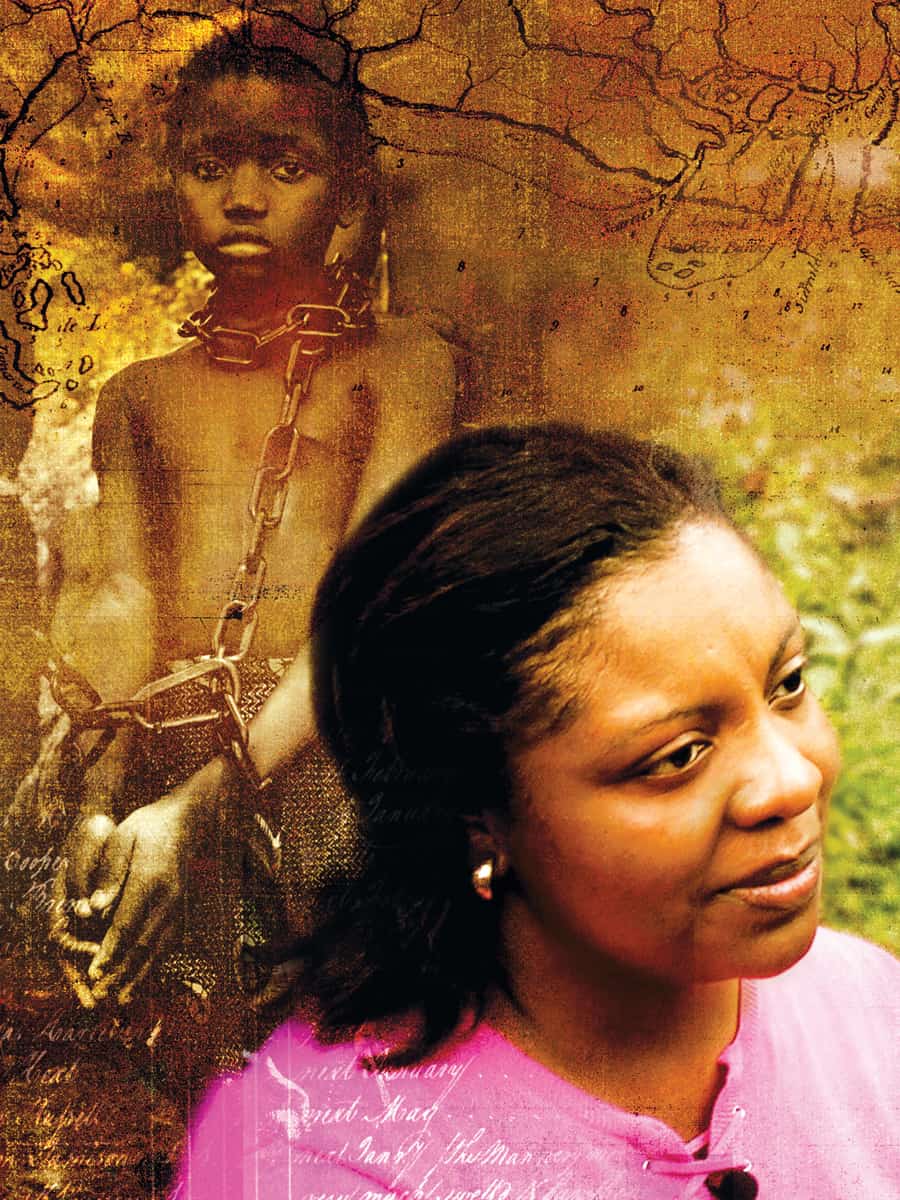A Priscilla's Homecoming journal
Being the Change
A firsthand account of an extraordinary journey
Jeanine Talley
From Spring 2006 Madison magazine. In February 2012, Priscilla's story was featured on NBC's RockCenter.
In 1756 a 10-year-old girl was kidnapped from her homeland in West Africa and through the Atlantic slave trade was taken to a plantation outside of Charleston, S.C. Named Priscilla by her South Carolinian slave master, she lived as a slave another 55 years, married and had 10 children.
JMU professor Joseph Opala and author Edward Ball traced, not only the extraordinary journey of this girl, but also her descendants through seven generations. They have done what millions of African-Americans often only dream about, determined a specific country or region of family origin and documented 250 years of family history long since forgotten.
In May 2005 that history was rewritten as Thomalind Martin Polite, the seventh generational granddaughter of that 10-year-old girl, traveled to Sierra Leone for the first time.
I had the opportunity to witness firsthand that extraordinary journey and record my impressions, and conduct interviews with several of the key players in Priscilla's Homecoming.
I spent a week in early summer 2005 with Priscilla's descendant, Thomalind Martin Polite, her husband, Antawn, and an entourage of about twenty other Americans (and one woman from Britain) touring and experiencing the spirit and welcome of the "lion mountain" country of Sierra Leone.
Priscilla's Posse
Our seven days spent as "Priscilla's Posse" included a full schedule of meetings with Sierra Leone's president, vice president and other high ranking governmental officials; presentations at the American Embassy and National Museum; theatrical performances at Fourah Bay College; boat trips to a traditional Susu village and slave castle; and a reception at the American ambassador's residence.
Nothing compares to the chartered bus ride through the country as children screamed "Priscilla! Priscilla!" and slapped the vehicle's sides if they were close enough or to the experience of standing on the last piece of land where thousands of captured Africans last touched their beloved home. We finally understood the strength that the 10-year-old Priscilla must have had to withstand every imaginable obstacle and return home after 249 years.
Bunce Island
To a small crowd of American and African journalists, the U.S. Ambassador to Sierra Leone, and a few Sierra Leoneans from the neighboring islands, professor Joseph Opala described the slave castle as it would have looked in its prime operational years -- gravel walkways; 40-foot high fortress walls; iron cannons wth the crest of the king of England; offices, workshops, and storeroom providing space for the guns, cotton cloth and rum offered in exchange for slaves; and strong rooms to keep the gold and ivory bought from the Africans.
This place was indeed a "bizarre, inhumane juxtaposition of a rich man's estate, prison and fortress" said Opala. Although a small space physically, it housed a huge Georgian-style two-story home, complete with a fireplace that was never used because of the region's tropical heat and an upper level veranda where the commander of the castle could entertain guests. Directly behind the house were the slave yards. The prison's enclosed spaces were divided -- men were in the wider, larger yard, and women and children were in the smaller, cramped one.
The African sun beat down, and the high prison walls and the towering "factory house" cut off the river's breeze. The suffocating heat made the space feel smaller than it already was. "Overcrowded" could not justifiably describe these yards where crowds of people suffered.
Walking around the small fortress, one felt a depressing weight at the thought of such a misuse of land and resources. Awe for the obvious human ingenuity in creating such a magnificent physical space gave way to massive disappointment and rage for its purpose.
Polite was overwhelmed; her face reflected pain, sorrow and horror as the tortures the captive Africans would endure were described. She said that standing on Bunce Island was "the most incredible moment" of the entire trip. Despite the sadness and the history, or maybe because of them, she felt nearer to her great, great, great, great, great-grandmother than at any other time during the homecoming. "Just knowing that Priscilla was there 249 years ago, and there I was standing on the same ground made the cycle complete."
Jeanine "Nina" Talley, daughter of JMU professor Cheryl Talley, worked with the JMU Honors Program and Furious Flower Poetry Center. She now lives in San Francisco, where she is a research and administrative assistant at the National Senior Citizens Law Center, Oakland Branch, located in downto
